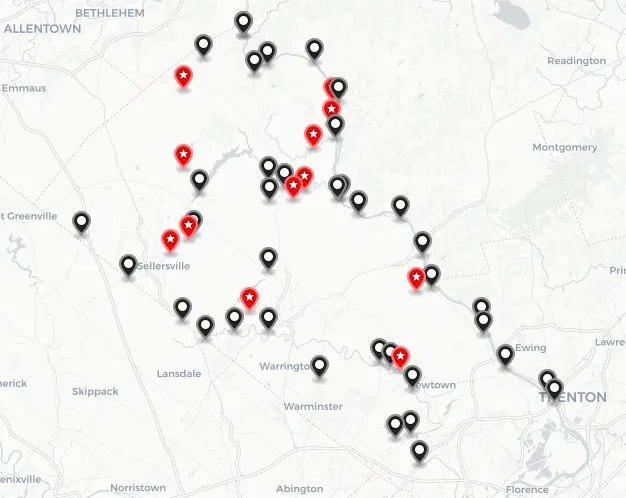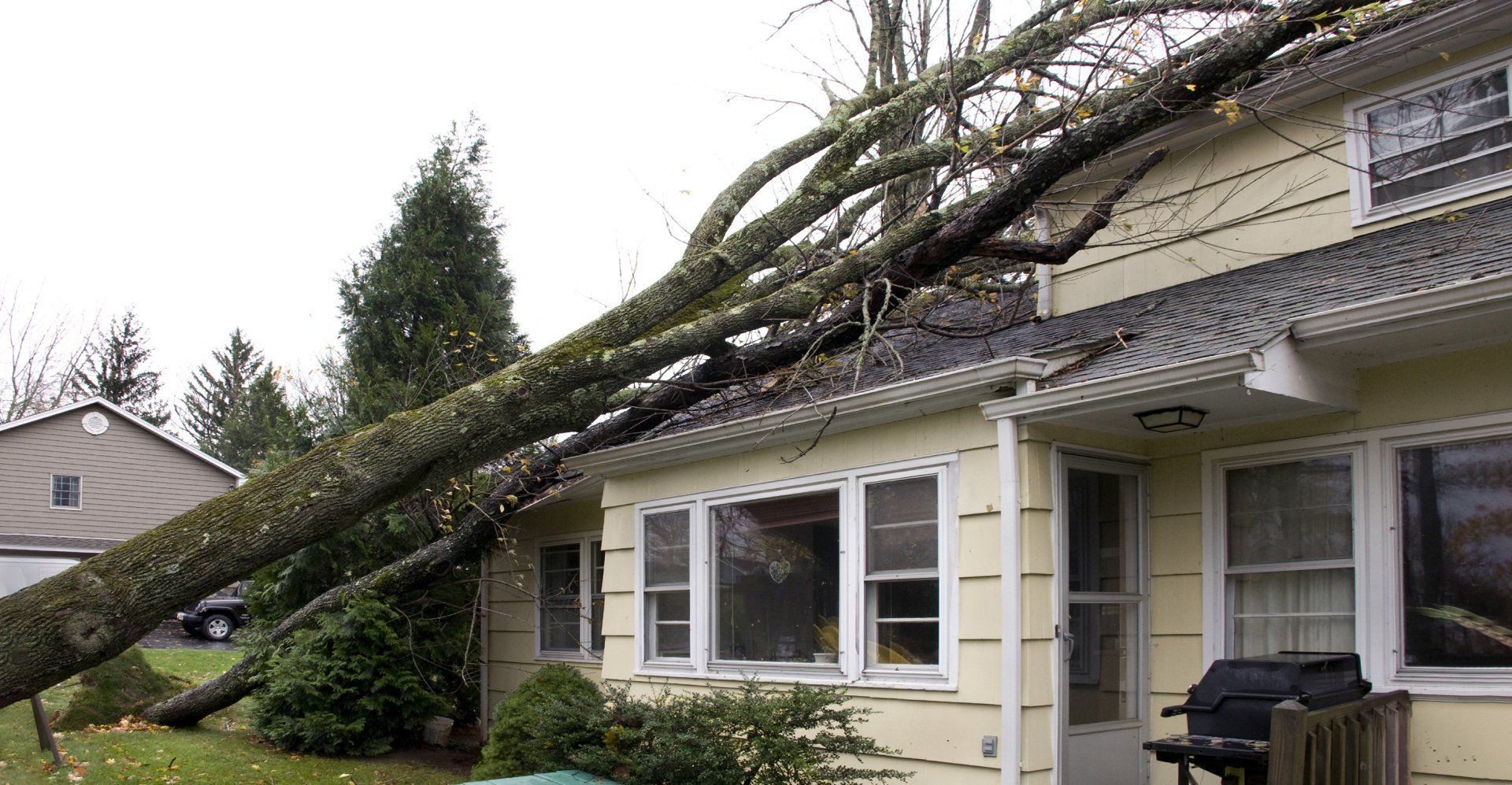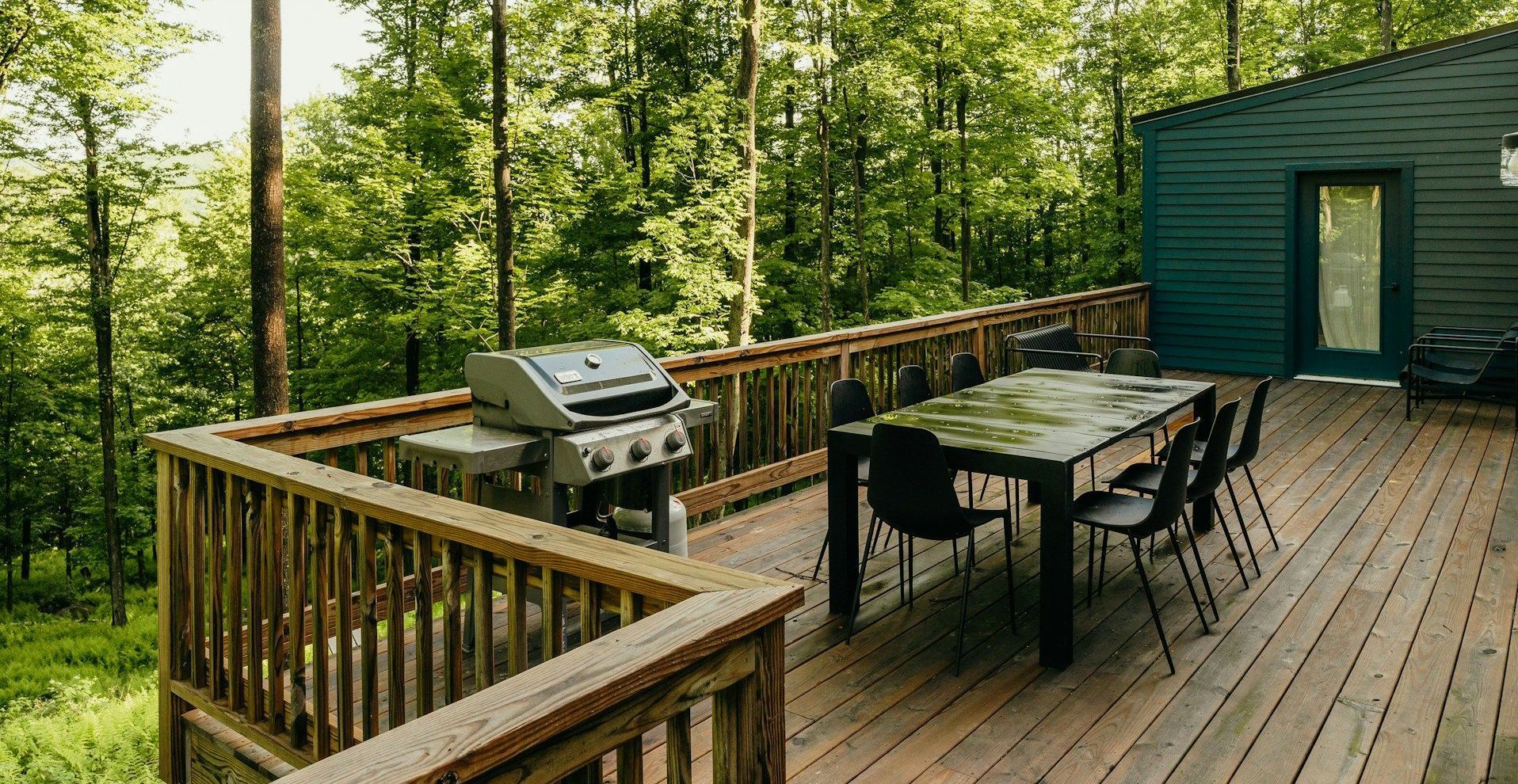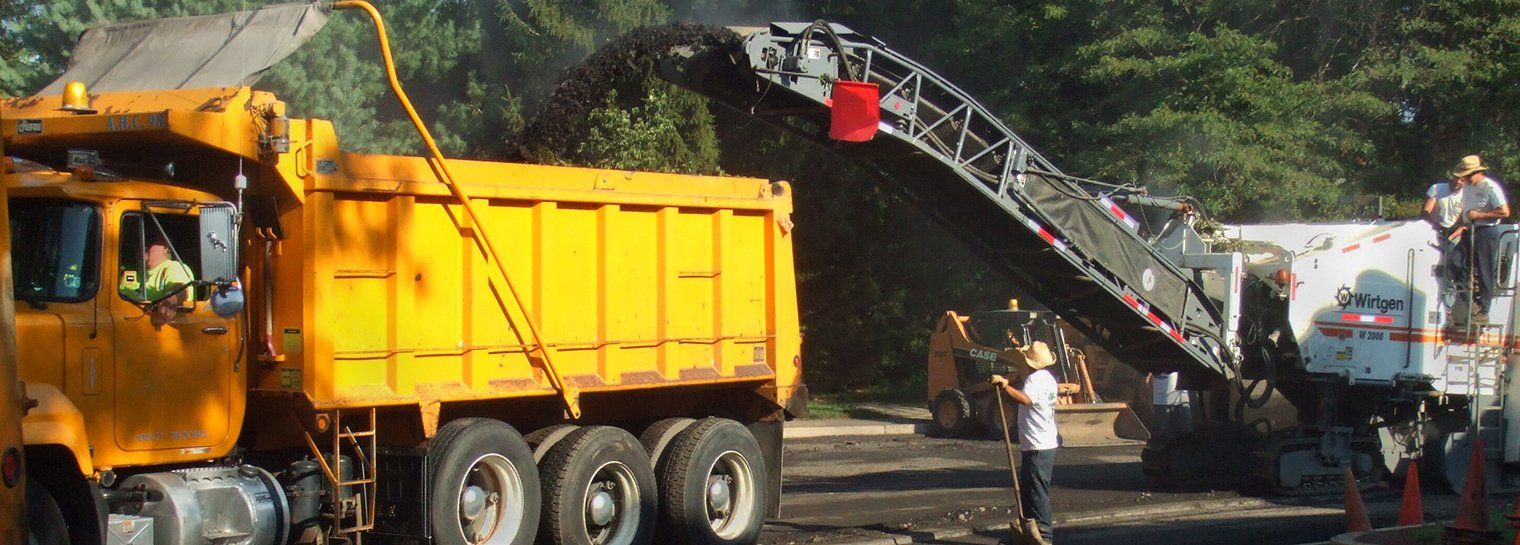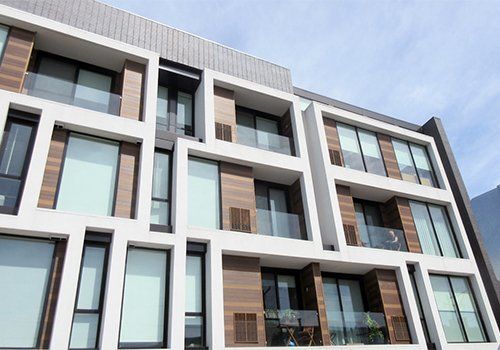Why are Covered Bridges Covered?
Bustamante Engineers Staff • June 12, 2020
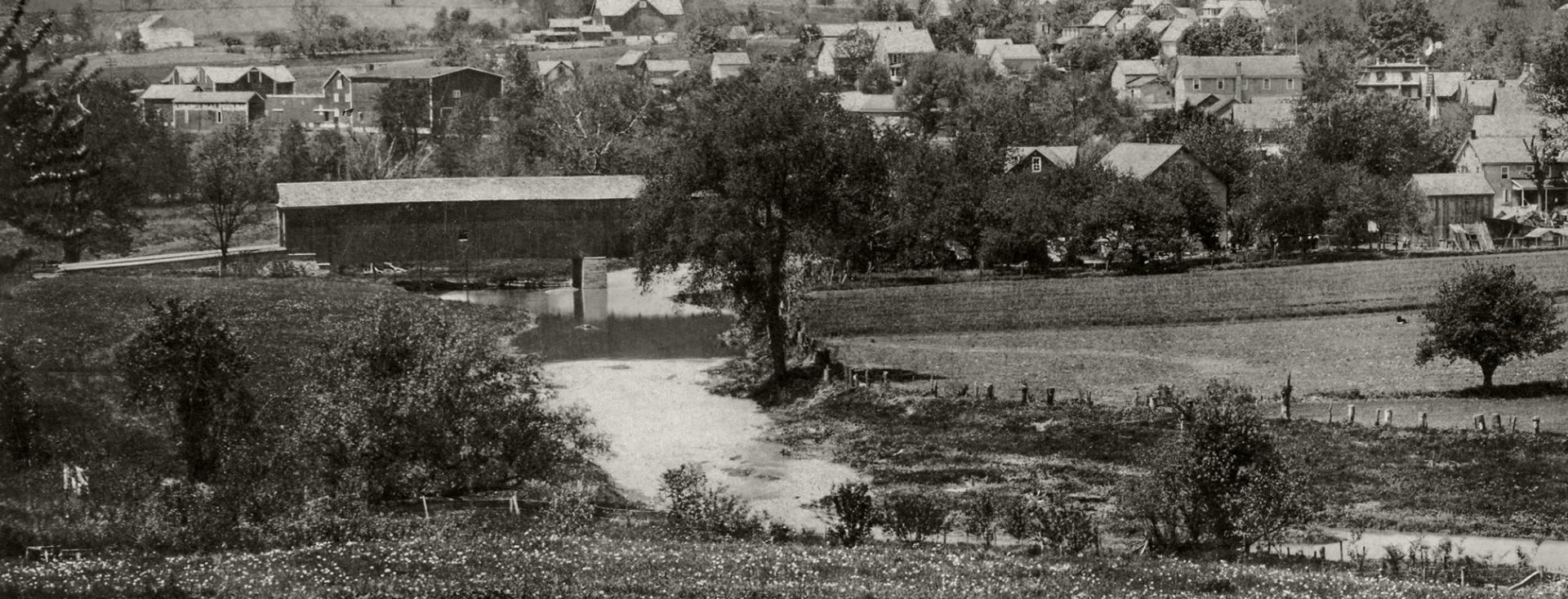
Covered Bridge across North Branch-Neshaminy Creek on Butler Pike in Chalfont, PA
The History & Engineering of the American Covered Bridge
Bucks County is well-known for its history and an important part of that story is its collection of wooden covered bridges. Since 1806, Bucks County has had 51 wooden covered bridges at various times, according to records at the Bucks County Historical Society in Doylestown, PA. The bridges played an important role in connecting formerly disconnected communities, mills and farms to a growing 19th-century road and canal network that were vital to the regional pre-industrial economic backbone.
Red markers indicate Bucks County, PA covered bridges that still exist - Black markers show where bridges once stood.
Covered Bridges may appear simple, but in truth they hold the key to unlocking the mysteries of innovation in construction during the development of the profession of engineering in the United States. Underneath the housing of a covered bridge is a more complex story. By manipulating a basic form - the triangle - civil engineers and builders developed truss types suitable for different topographies, spans, and modes of transportation. Today covered bridges are considered historical landmarks, romantic structures resembling the past, but what was the purpose of covering these bridges?
How Did the Science of Bridge Engineering Develop?
As engineering schools began to spring up in 19th century United States, efforts to test loading capacity and patent designs were balanced with empirical evidence gained by a generation of master builders. Truss designers critiqued each other’s patents and tried to make improvements. Engineers and builders used scientific observation to determine effects such as deflection, changes in camber, wood shrinkage, and wear on connections to improve wooden truss design. Covered bridges are usually identified and classified by their truss construction.
What is a Covered Bridge?
What is a Covered Bridge? A covered bridge is a technical name for a specific kind of structure, not just any bridge with a roof. True covered bridges are defined by a timber truss (or frame) that distributes the weight of the load-bearing deck. The truss design determines how long a span it can have and how complex it is to build. This makes them different than simple timber beam bridges or other similar structures. Of course, to be a covered bridge, that timber truss must also be covered.
But Why Build a Bridge Out of Wood?
Low cost of building materials. Covered bridges date back to a time in the country when almost everything was made of wood because of its abundance. Working with wood, like any material, has its advantages and disadvantages. Timber is lighter than stone and cheaper than iron or steel, but still very strong. However, wood also deteriorates faster.
Why Is It Necessary to Cover a Bridge?
The fundamental structural purpose for covering a bridge is to shield the trusses and deck from the elements. Because wooden bridges with exposed superstructures are vulnerable to rot, covering and roofing the bridges protects the trusses from the weather, and so they last longer. Bridge engineers pointed out that uncovered wooden bridges have a 20-year lifespan, but if you covered a wooden bridge with a roof it could last upwards of 100 years.
Why Paint a Bridge Red Like a Barn?
Cost again - red paint is cheap. Before paints became common and affordable, farmers still needed a way to protect their barns. To solve this problem, they mixed together three things they had plenty of - skimmed milk, lime and rust (iron oxide). This mixture created a red, paint-like coating which protected the wood and helped keep the barn warmer in the winter. Therefore, covered bridges are typically painted red because it was less expensive.
Any Other Valid Reasons to Cover a Bridge?
Covering the trusses makes a big difference to wear and tear, but that's not the only reason why people covered their bridges. For one, the truss makes the entire structure much stronger, letting you build longer bridges. When you add the covering, it actually reinforces the truss, strengthening the bridge.
Misguided Explanations for the Covering of Bridges…
- To sooth skittish animals. It was thought that the sight of rushing water or the height of the bridge would startle the horse/mule/farm animal, preventing it from traveling over the bridge so they were built to resemble familiar barns.
- To keep snow off the bridge.
- To keep the oiled planks of the roadbed from becoming dangerously slippery in the rain.
- To cover up unsightly trusses.
- To provide shelter to travelers caught in a storm.
- To provide a place to court your lady and secretly give her a kiss (thus the nickname Kissing Bridge).
Just How Rare Are Covered Bridges?
Of the more than 10,000 covered bridges that once existed throughout the country, nearly 700 still survive in 29 states. Pennsylvania has the most remaining covered bridges in the US, with 212 in 37 counties.
Even in their sometimes dilapidated or poorly restored condition, many of the remaining covered bridges are still in use on public roads today, reaffirming that these venerable structures are more than just quaint leftovers of the past. They are an integral part of our social, cultural, and engineering heritage that merits preservation.
SHARE CONTENT
Bustamante Blog
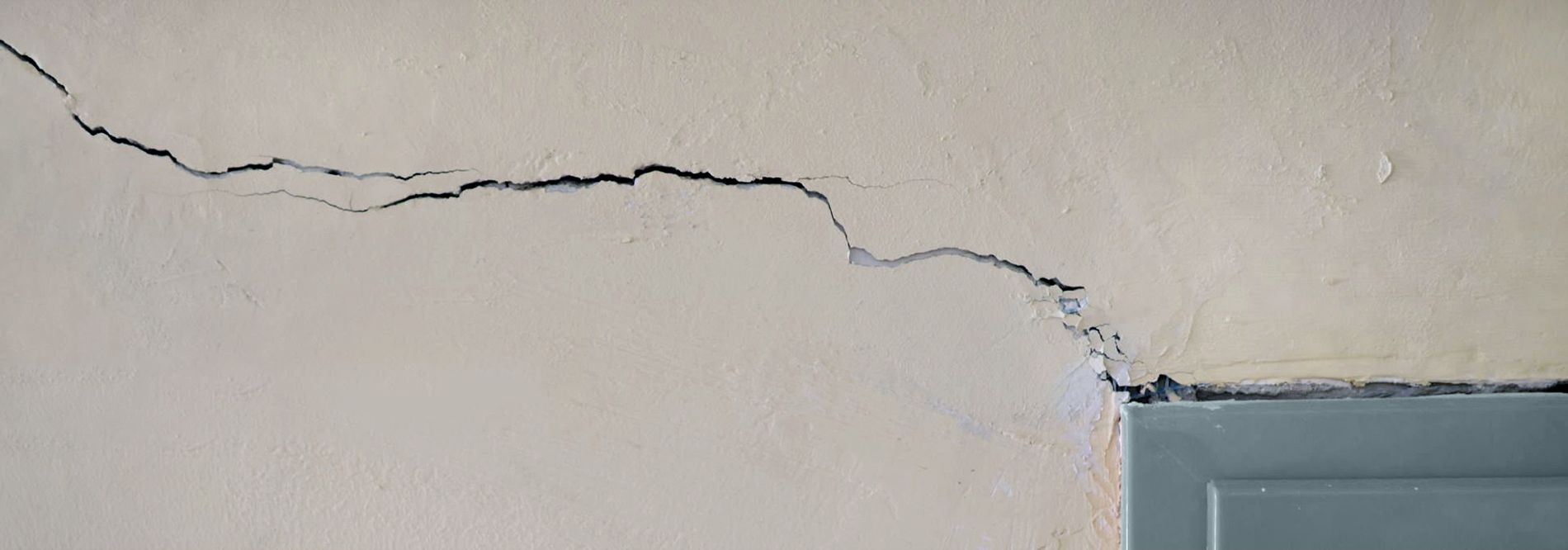
Cracks in walls can be a confusing sight for homeowners, as they may wonder if the cracks are harmless or indicative of structural problems. The key to proper repair and prevention lies in understanding what type of crack it is and its cause. Not all wall cracks should raise equal levels of concern. Whether hairline or larger, vertical or diagonal, each crack tells a unique story about the state of your house’s structure and the external factors affecting it...

The BUSTAMANTE ENGINEERS Inc. project that we are highlighting this month is CMP pipes that deteriorated and caused a portion of the pipe to collapse, and the necessary funding to complete the project. These four pipes were initially installed to allow for an existing creek to continue flowing underneath a roadway. The project was pertinent as one of the four had already collapsed and the remainder of the pipes were in a similar disrepair. The cost of replacing the 400 linear feet of pipe was a significant undertaking but made possible with the assistance in the form of a loan received from Pennsylvania Infrastructure Investment Authority (PENNVEST).
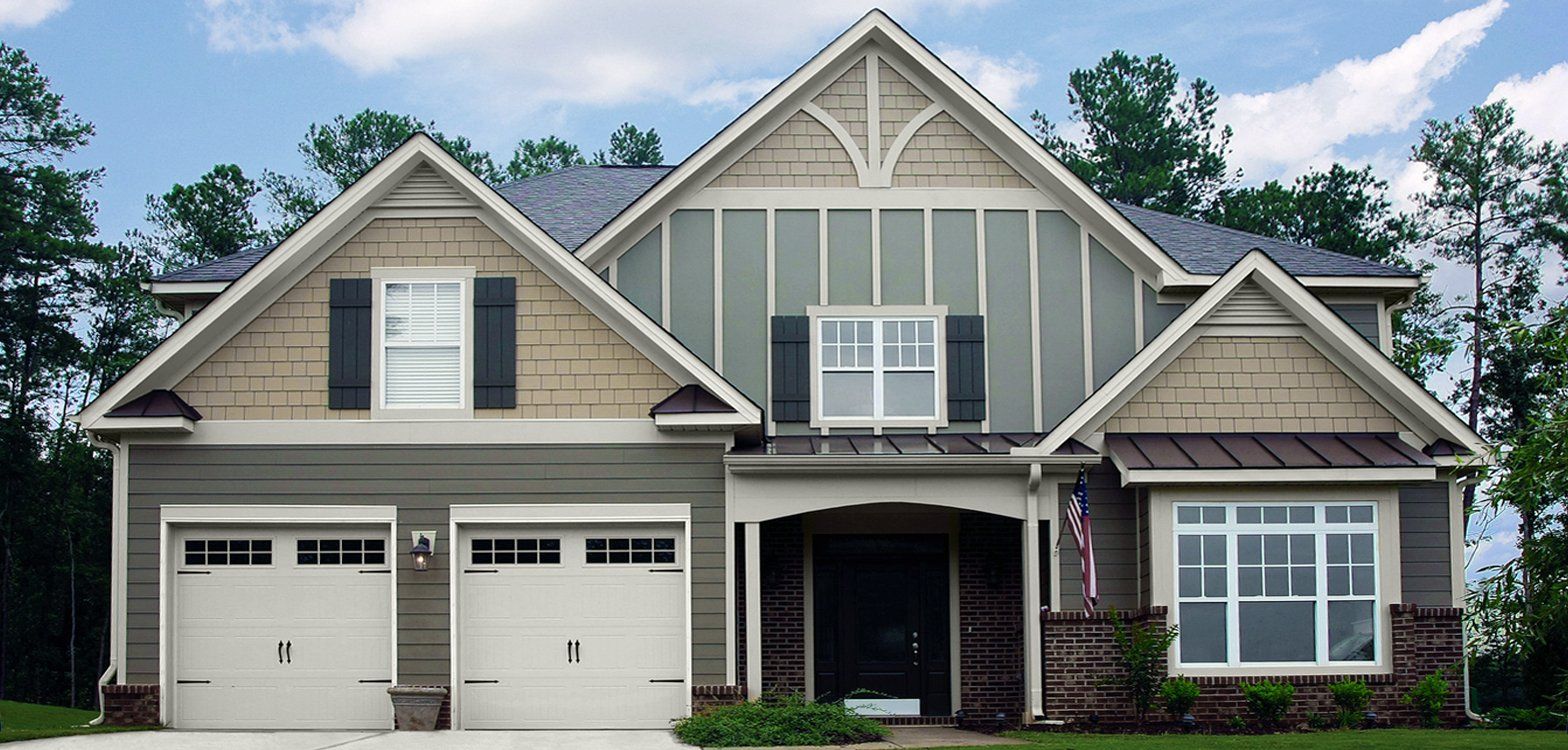
From the initial site analysis to the final inspection, professional engineers ensure that every aspect of a residential renovation is structurally sound, safe, and compliant with all relevant regulations. Engineers also contribute to modern energy efficiency goals by designing systems and structures that reduce environmental impact and enhance energy efficiency. Their role is not only about ensuring the technical aspects of the renovation but also about providing peace of mind to homeowners, knowing that their home is in capable hands.
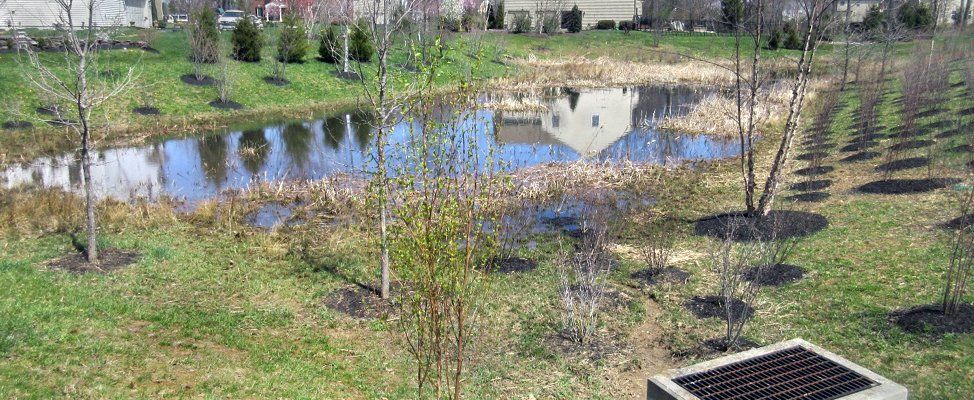
Any impervious surface, including items such as roads, roofs, or sidewalks, does not allow water and snow to drain into the soil and thus increases the amount of stormwater runoff. Common practice is to prevent the stormwater runoff from traveling off the developed site, making detention or retention basins necessary...


